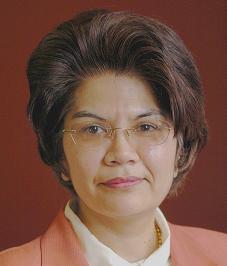Guest Editor: Joyce Burkhalter Flueckiger, Emory University
Editor: Tazim R. Kassam, Syracuse University
 Tazim R. Kassam, Spotlight on Teaching Editor Tazim R. Kassam, Spotlight on Teaching Editor
Fortunately, the study of religion offers much occasion for humor. This issue on Site Visits, shaped and produced with the expert assistance of guest editor Joyce Flueckiger, reminds me of a cartoon I once stuck on my office door. In a dimly lit restaurant, family members are kneeling on the carpet around their table as diners look on astonished. A customer asks, “Religious ceremony?” Waiter replies, “Lost contact lens!” A delightful way to cast doubt on the WYSIWYG principle (what you see is what you get).
Diana Eck’s A New Religious America (2001) and the myriad projects she has undertaken under the Pluralism Project, including the CD-Rom On Common Ground: World Religions in America (1997), eloquently, vividly, and impressively document the transformation of the religious landscape of the U.S. Dotted across urban and rural America are places of worship, community centers, and cultural festivals that underscore the stunning fact that “the United States has become the most religiously diverse nation on earth.” The implications of this are many, least of which is the need for enlightened mutual recognition, a prerequisite for civil society.
However, as the cartoon illustrates, understanding requires far more than just seeing. In a world saturated with images (still and moving) that function as the primary medium for the message, Marshall McLuhan’s prediction that “The future of the book is the blurb” is not far off the mark. Modern communication technologies have intensified the use of and (often exclusive) reliance upon the visual senses as a source of information. Ironically, while students may assume that reading a book or journal article is harder to do than watching a video or attending a religious festival, the rigors of checking facts and sources, analyzing multiple perspectives, assessing logic, and asking critical questions are intellectual tasks applicable to both. Hence, the training of perception and visual intelligence is a crucial part of developing students’ thinking skills. To rephrase the Chinese proverb: A picture’s not worth a thousand words unless one knows all them words!
The articles in this issue of Spotlight carefully examine the complexity of Site Visits (broadly defined) and the risks and opportunities involved in using them. Wide-ranging in scope, they address the practical nuts-and-bolts of organizing site visits as well as their pedagogical, ethical, and intellectual dimensions. Readers will learn why the contributors use site visits in their teaching; how they prepare their students for them and integrate them into course assignments; the types of challenges their students and hosts face during site visits; and alternatives or substitutes to site visits (for example, museums and Web sites). Embracing the opportunity to learn from the dynamic and multifaceted religious landscape of America, the articles also signal the pitfalls of mere sightseeing, and chart ways to making these encounters truly transformative and educational.
|
![PDF-NOTE: Internet Explorer Users, right click the PDF Icon and choose [save target as] if you are experiencing problems with clicking.](http://rsnonline.org/templates/rsntemplate-smallmasthead/images/pdf_button.png)

![PDF-NOTE: Internet Explorer Users, right click the PDF Icon and choose [save target as] if you are experiencing problems with clicking.](http://rsnonline.org/templates/rsntemplate-smallmasthead/images/pdf_button.png)
